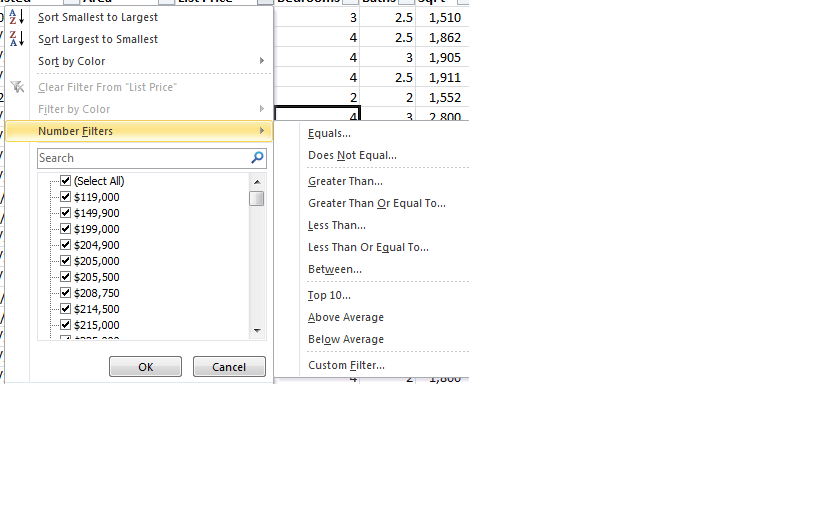Tabs are very useful things especially since we are all using proportional type (there is space in the width of a w for five letter I’s). In the very old days, you could get away with using spaces instead of tabs. On a typewriter you could put in a tab, but they only justified on the left. Word’s tabs can left justify, center, right justify, decimal tabs and even draw a vertical line down your text.
Word’s default is to set a tab every half inch.
If you know the measurement for your tab stops (I want one at .5, 2.25 and 7”) then you can easily use the tab setting in the paragraph menu.
Once you click on the tab button in the lower left, you’ll see
This is where you will type in the measurements for the tabs that you want. Below is a sample of what each one of the five options gives you for settings:
The top of each column tells you what type of tab it is except for the bar tab. It’s the three vertical lines. With a bar tab, you just set it and anytime you type a line, it will insert a vertical bar in your data.
You also have the option of leaders (those dots between the text and page number in a table of contents). Most times you will probably choose none, but having the other three choices is handy. To set these, click on the tab you want to change to one of the other types. Left and none are the default choices. Also here’s where you can clear all the tabs. It only does it in the section that you’re working in.
For me, most times I don’t know what measurements I want, I just want to set a tab. To set a tab and be looking at your data, you need to make sure that your ruler is turned on. It should be located on the view menu. Here’s the s on the ruler for the previous sample:
Notice the L (left tab) the three short vertical lines are where my bars are. The upside down T is a center tab. This one will allow you to center text over a column or some other data instead of the center of the line. The backwards facing L is the right tab, where everything is justified on the right side. The last one is the decimal tab which is the upside down T but with a dot in the upper right corner. To change from one type of tab stop to another, on the far left side of the ruler, you will see the L for a left tab. Just keep clicking until you get the one you want.
There are two more icons on here, the upside down triangle and the rectangle. The upside down triangle controls the first line of your paragraph. You were probably taught to tab to indent a paragraph; you’re showing your age!!! If you are planning on writing a document with the first line indented, set this guy to how far you want the line indented, and all of the paragraphs that you type will be the same. Now if you’ve done your document in block style (everything to the left), and now you want each first line of a paragraph indented, select all the paragraphs, and once you have the first line indent chosen on the far left, you can click where you want all the paragraphs indented. If you’re careful, you can grab the downward facing triangle on your ruler and drag it to where you want, but remember only the very tip of your mouse pointer is the active part.
The other icon is the rectangle, and it controls all the other lines in your paragraph. This is used when you want a hanging indent, for example when you want 1. Tab and text, and you want the 1 to be hanging to the left of the rest of the paragraph. This is set the same way as the first line indent. To me this is very interesting, because if you were just using the icons on the ruler, you would want to grab the upward pointing triangle and drag it for the remaining lines indent. The rectangle below it will move both the first line and the rest of the paragraph indent together as a pair.
One thing really nice about tabs, and using the ruler, is if you find out that your data is longer than the space you had set, you can select your text and then drag the icon to where you want it to be now. The text will automatically move as you’re dragging the icon around.

















